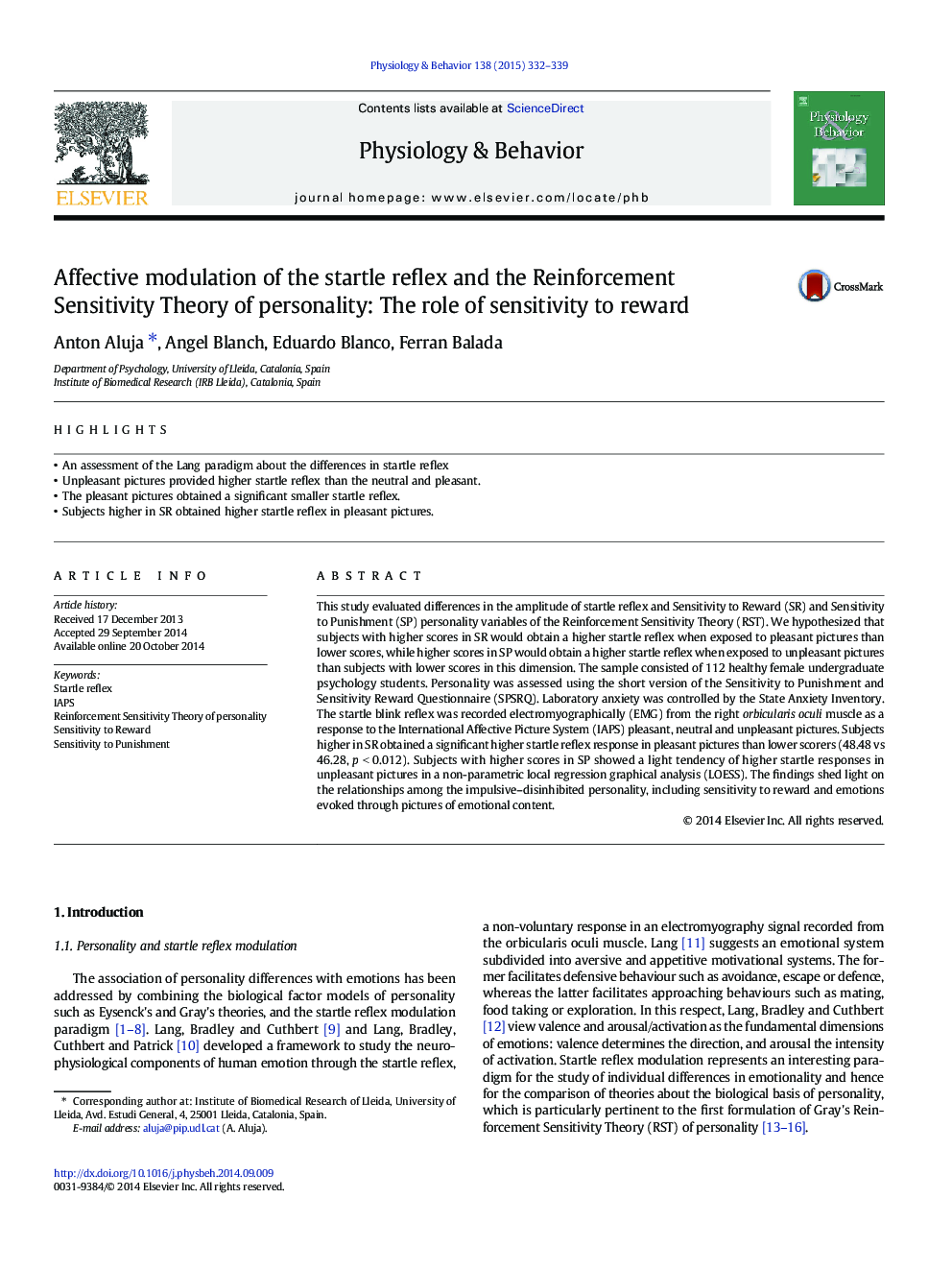| Article ID | Journal | Published Year | Pages | File Type |
|---|---|---|---|---|
| 2844231 | Physiology & Behavior | 2015 | 8 Pages |
•An assessment of the Lang paradigm about the differences in startle reflex•Unpleasant pictures provided higher startle reflex than the neutral and pleasant.•The pleasant pictures obtained a significant smaller startle reflex.•Subjects higher in SR obtained higher startle reflex in pleasant pictures.
This study evaluated differences in the amplitude of startle reflex and Sensitivity to Reward (SR) and Sensitivity to Punishment (SP) personality variables of the Reinforcement Sensitivity Theory (RST). We hypothesized that subjects with higher scores in SR would obtain a higher startle reflex when exposed to pleasant pictures than lower scores, while higher scores in SP would obtain a higher startle reflex when exposed to unpleasant pictures than subjects with lower scores in this dimension. The sample consisted of 112 healthy female undergraduate psychology students. Personality was assessed using the short version of the Sensitivity to Punishment and Sensitivity Reward Questionnaire (SPSRQ). Laboratory anxiety was controlled by the State Anxiety Inventory. The startle blink reflex was recorded electromyographically (EMG) from the right orbicularis oculi muscle as a response to the International Affective Picture System (IAPS) pleasant, neutral and unpleasant pictures. Subjects higher in SR obtained a significant higher startle reflex response in pleasant pictures than lower scorers (48.48 vs 46.28, p < 0.012). Subjects with higher scores in SP showed a light tendency of higher startle responses in unpleasant pictures in a non-parametric local regression graphical analysis (LOESS). The findings shed light on the relationships among the impulsive–disinhibited personality, including sensitivity to reward and emotions evoked through pictures of emotional content.
